Community ProjectsDare, Accomplish, Transform
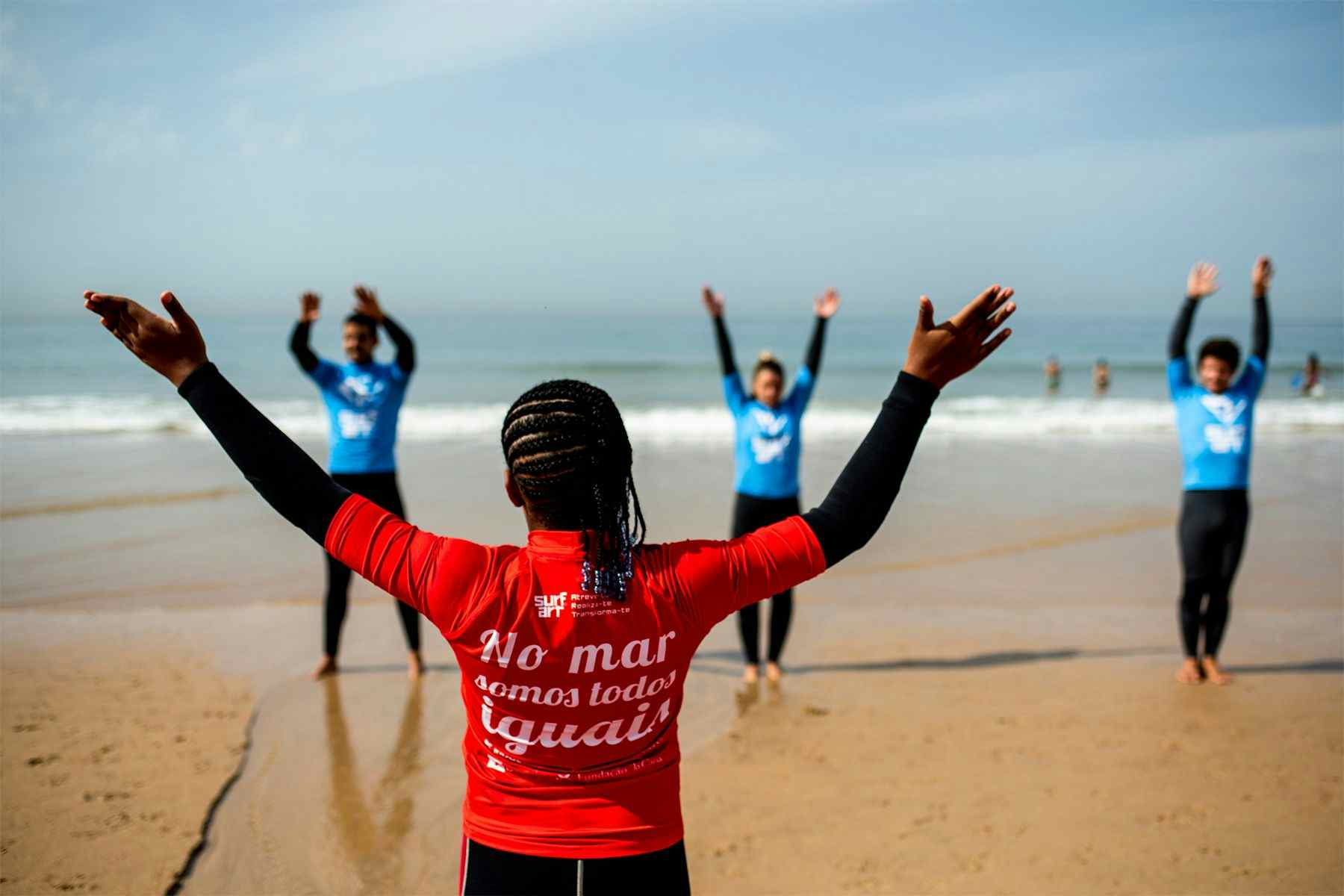
Surf.ART Portugal, Empowering At-Risk Youth Through Surfing
Part of surfing’s great potential lies in the resolve with which we look ahead; the concern with which we look around. It is about the waves…and yet it isn’t only about the waves.
“Children are one third of our population and all of our future.”
— Select Panel for the Promotion of Child Health, 1981
Portugal, an increasingly acclaimed surfing nation, has thousands of kilometres of coastline, an eventful history of surfing, free and accessible beaches, world-class breaks, a prominent surf scene and a prolific surfing community. It also has a rate of early-school leaving (12.6%) higher than the European Union average (10%) – a phenomenon largely caused by the ways that social inequality and discrimination toward race and ethnicity create feelings of social exclusion; a phenomenon which, considering the above quote, calls for attention.
Dr Nuno Fazenda, a surfer and psychologist specialising in Sport and Physical Activities, post-graduated in Surfing and Performance, is someone who has tried to produce a more positive outcome from these two facts. Departing from the question “How can we better help these youth to succeed at home, in school and in society?” he co-founded, alongside a team from Pressley Ridge Association Portugal, the Surf.ART project – an intervention programme that uses surfing as a means to develop skills in at-risk youth.
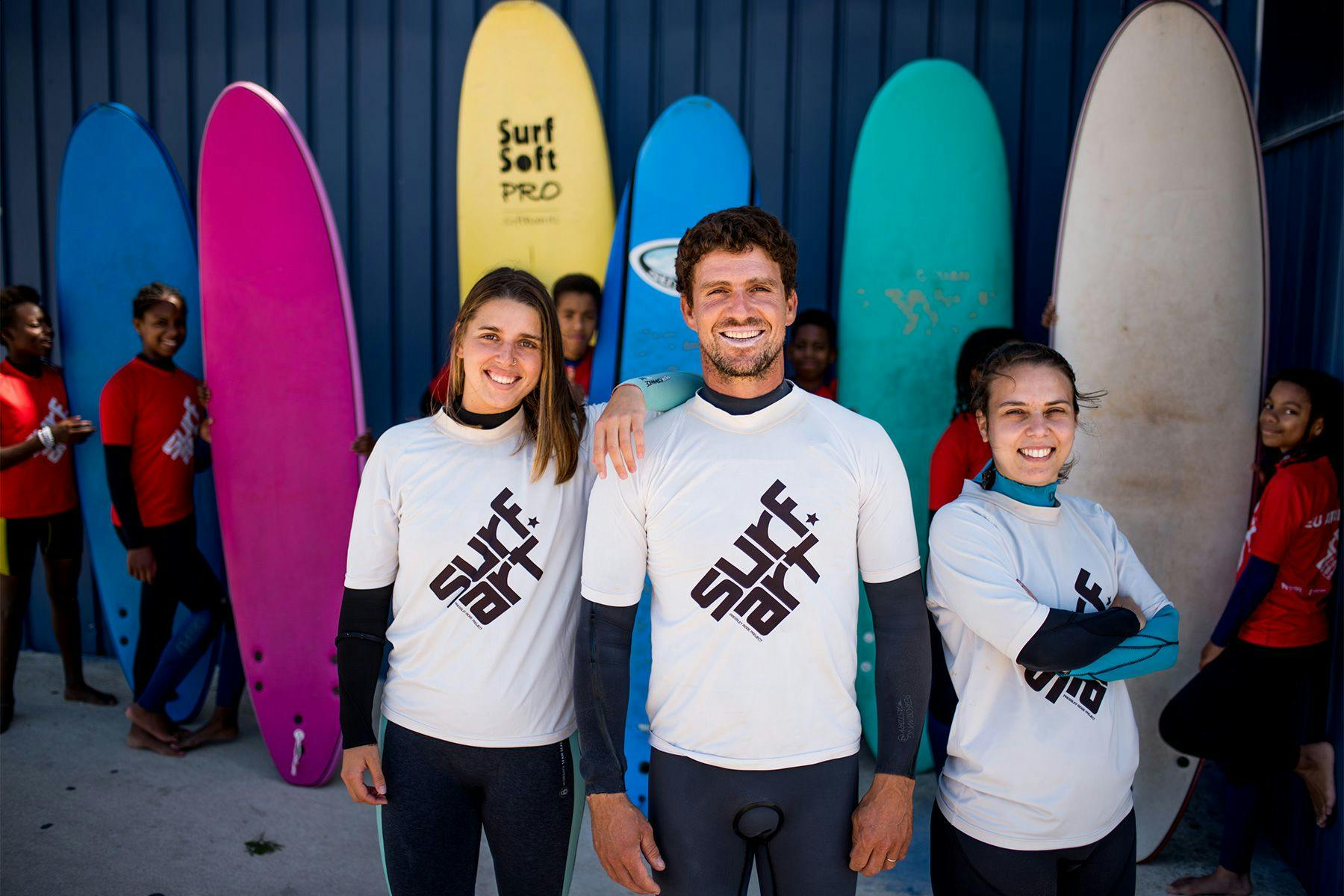
According to the 2019 report from the National Commission for the Protection of Children and Youth at Risk, out of the 43,796 processes (24.5% in the Lisbon district alone), 71% of children and youth were within school years (between 6 and 18), educational establishments being the second entity with the highest number of reports of dangerous situations (20.25%).
The main issues identified were:
- Negligence (34.5%);
- Domestic violence – including subcategories “domestic violence” and “physical offence in the context of domestic violence” (22.1%);
- Dangerous behaviour in childhood and youth (21%)
- Right of education (18.2%)
Since surfing has been used in youth development programmes before, Fazenda and his colleagues drew on the potentials of the sport to attempt to mitigate the above numbers. Standing for Dare, Accomplish, and Transform (in Portuguese Atreve-te, Realiza-te, Transforma-te), Surf.ART has pioneered surf therapy programmes in the country; to date, it has worked with nearly 100 youth and assisted over 300 individuals such as family members and teachers in the Cascais municipality. Early in 2020, the team published a paper on the six-year outcomes of interventions, outlining the findings behind multivariate analyses conducted with 69 participants, which highlights the potential for similar initiatives to be implemented in communities across the globe where positive social behaviours among youth lack and waves abound.
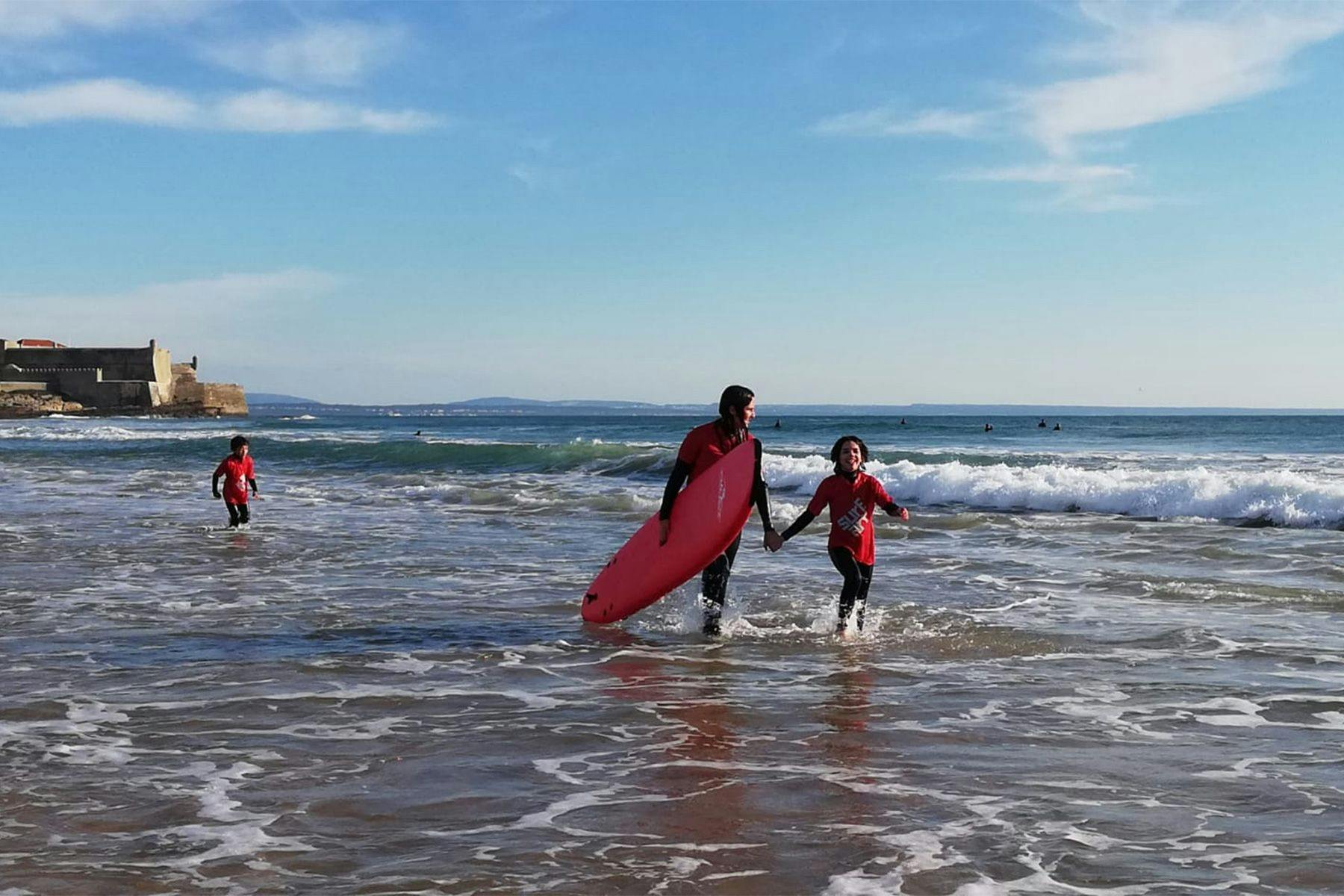
What follows is the translation of an email interview with Dr Fazenda; it has been partly edited for readability.
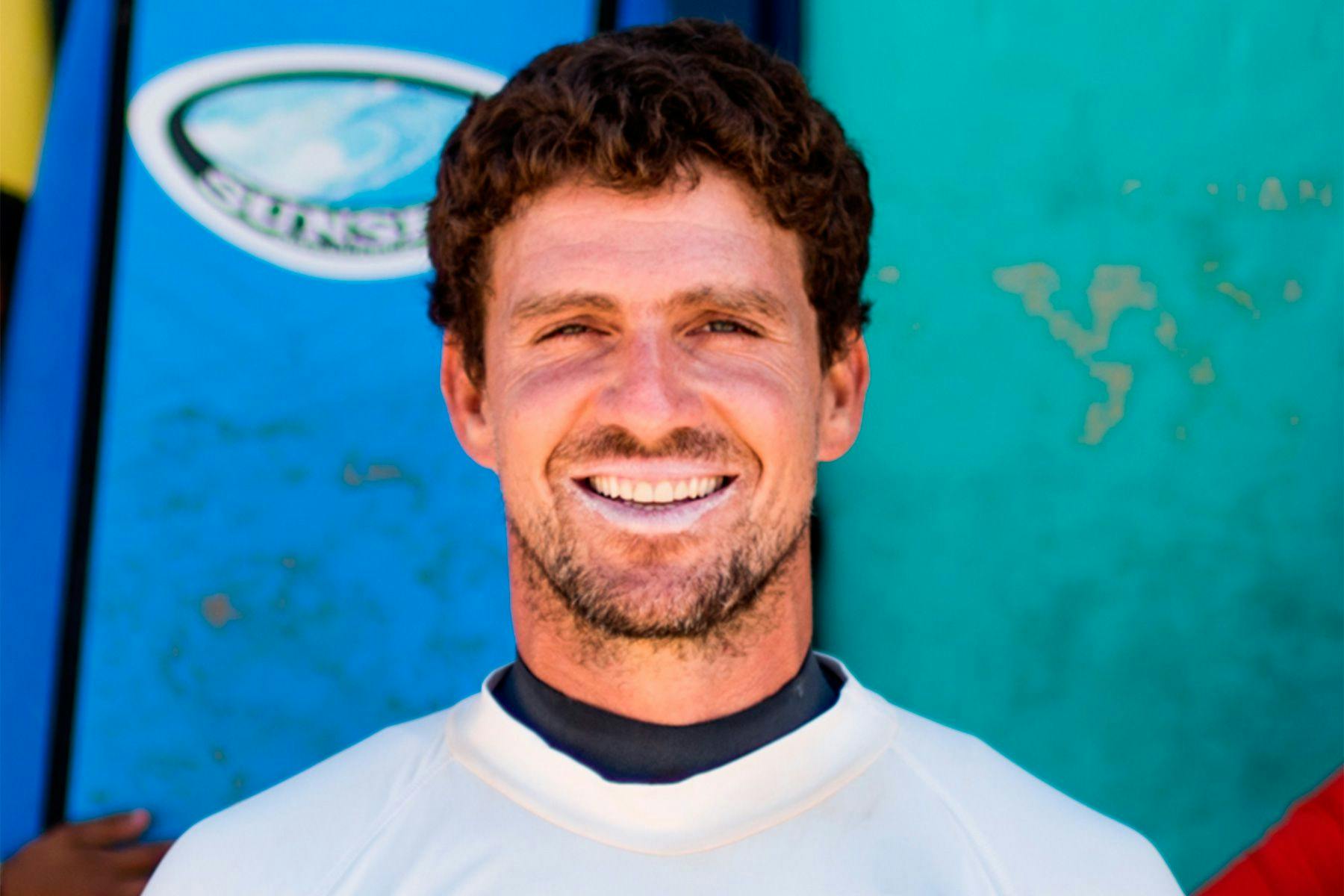
How did the idea of Surf.ART come to be?
The idea was born in 2011, in a training promoted by the Pressley Ridge Association – Pressley Ridge Appreciative Inquiry Training – that basically prompted us to think about the future of the association and what we saw ourselves doing in the coming years.
The risk factors associated with failure and school drop-out – such as the consumption of psychoactive substances, problems with behaviour and adjustment, lack of hope for the future, absence of parental monitoring, and social isolation – place students in a spiral of social maladjustment, which enhances the development of mental illness and social disintegration. Teachers have the opportunity (often unique) to contact students exposed to these risk factors and create opportunities for growth and learning, making a difference in the lives of these children and young people repeatedly. However, the difficulties expressed by youngsters in social interaction and learning, and the aggressive behaviours often demonstrated, incite teachers who inadvertently end up promoting learning models based on punishment and centred on adults.
In order for learning to take place, we then thought that it would be necessary to introduce intervention models based on strengths and focused on teaching life skills and fundamental behaviours for children and young people. Hence, the idea emerged from the need to discontinue the unfavourable cycles that are perpetuated in the lives of these children and young people, creating a solution that promotes the improvement of social well-being and success in their lives through the practice surfing and contact with nature.
And how did your personal story intersect with the project’s?
It was the combination of a personal passion (surfing) with a professional passion (psychology). I had been surfing for a while and at the time had already worked with children, young people and families in challenging contexts. Paulo Canas, a colleague from the communication area, had recently started surfing and was already nurturing this passion. So we started to develop the project, and in September 2011 applied for training promoted by the Institute of Social Entrepreneurship (IES) and INSEAD. We drafted the business plan and were one of the finalists, which granted us mentoring for a year. In May 2012, we ran for the Cascais Business Ideas contest and received an honourable mention, thus establishing contact with the Cascais City Council. We made several presentations (including the OceanHub @ NOVA – Value of Waves), and in November 2012, through to a challenge from the Cascais City Council, we started a 6-month prototype with 14 children from 9 to 11 years old.
The results were very promising, and in September 2014 we implemented a 3-year program with two groups of 13 children aged 7 (from year 2 till year 4). Since then, we began to grow the project in a very focused and controlled way. Today we have 4 groups of schools, 80 children per year divided into groups of 10/13 children, groups of parents, and community interventions. The City Council is our main partner, and for the past 2 years we have had the opportunity to work with the support of the prize promoted by the BPI foundation, “la Caixa” Childhood. Last December we won the 1st prize promoted by the European Commission – #BeInclusive EU Sports Awards 2020.
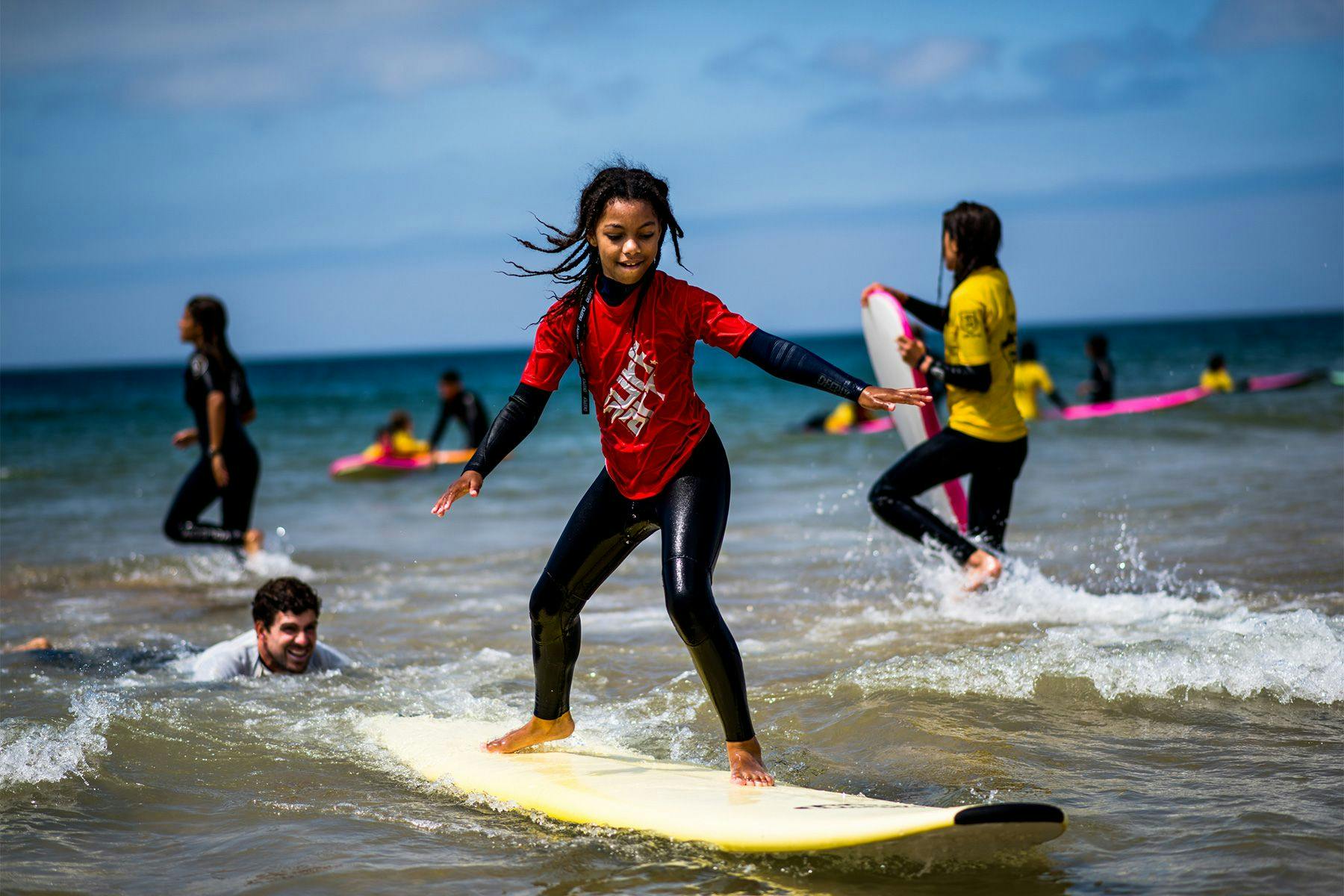
What does a day of Surf.ART intervention look like?
The project contemplates several areas, ranging from Experiential Education and Adventure Therapy (beach sessions), development of life-skills projects (school sessions), thematic workshops, crisis intervention (office), and sessions with parents in order to promote positive parenting. However, the main weekly activity is the Experiential Education and Adventure Therapy sessions, in which we use experiential methodology to facilitate a process that actively involves children in the experience and benefits them.
These sessions take place mainly in the afternoon and last for 4 hours. The process involves taking the children from school to the beach (with the project bus), running the session, and returning to school. Communication, interaction and common goals are a must when establishing the direction of actions in a group. In this way, after putting the wetsuits on, there is first a moment of news sharing, organised in a circle, where the children are challenged to think about their week and to share the good and bad things that have happened. With this we intend to promote the sharing of positive moments and emotions, thus creating a secure and belonging context, essential to our work. Then the group formulates the objective for the session taking into account the conditions of the sea, the spirit of the group, etc. The session on the water always includes dynamics that help them to work on personal and social aspects and to achieve their intended goals. After everyone is dressed, we do the reflection round – the last phase of the session – which is fundamental in this type of approach. The objective is to encourage children to seek intra and interpersonal development, through reflections, talking and listening in a group. It is the moment when each one selects what was most significant during the “action”, decides what he/she can share with others, and looks for the right way to do it, confronting the reaction of others. In order to do so, they elaborate what was initially nothing more than a provoked experience and give it meaning according to previous experiences.
The psychologist’s role with the group is to use techniques and procedures that aim to bring out the emotions that are being experienced by the group. At the end of this process, children develop new skills, new attitudes, and new theories or ways of thinking that they can then transfer to their daily lives. They can also relate their knowledge and theory with experience to better understand or modify their current attitude, idea and/or behaviour.
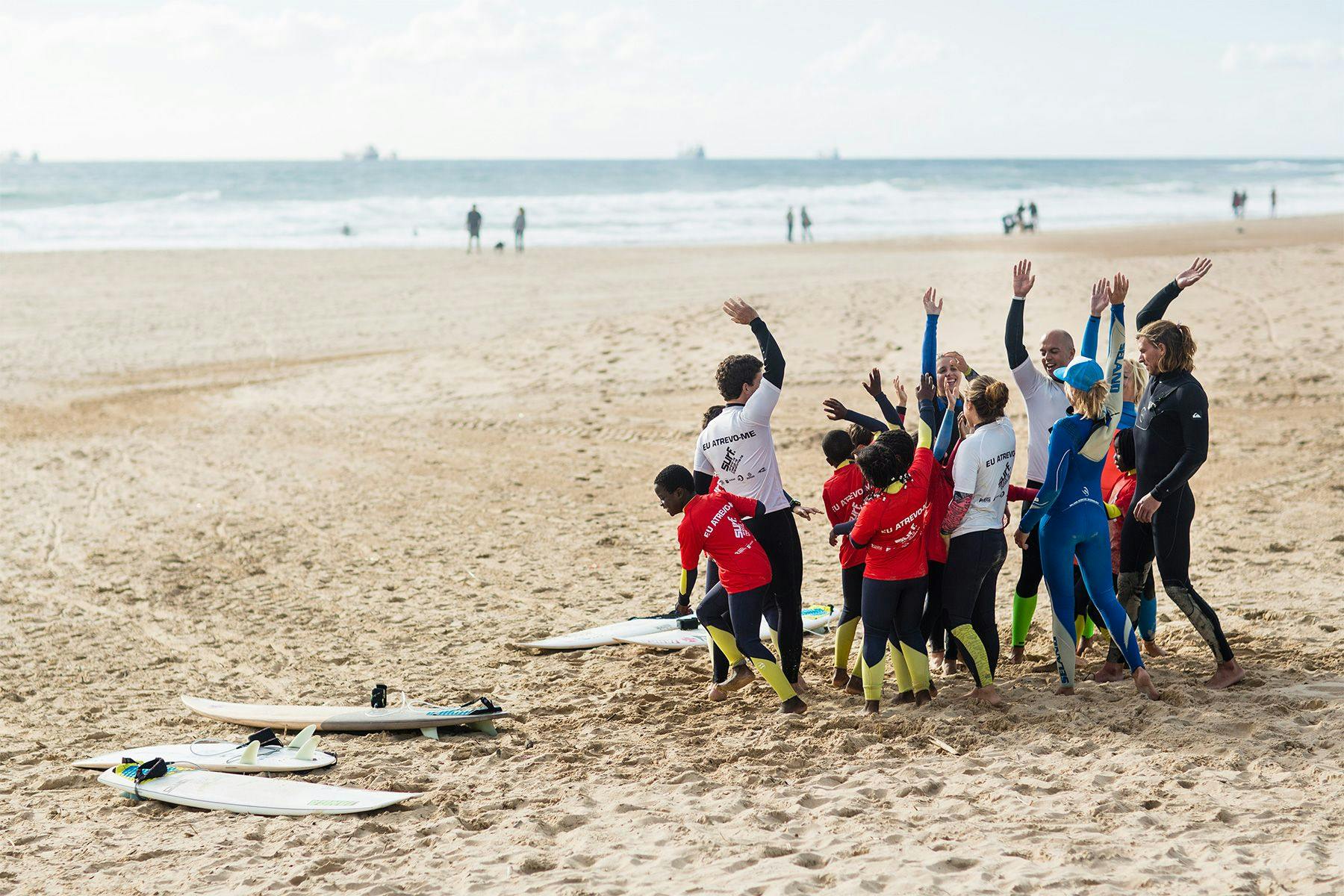
Besides the current limitations in the research mentioned in the paper, what are the main practical challenges faced by the programme?
At present, our biggest challenge is the same as the whole society – the pandemic – since it limits our field of intervention. Even now, we are unable to give sessions on the beach, which are being conducted in the school environment. On the other hand, although our partners continue to believe in our project and support us, all help is always welcome. Fortunately in these last two years, we were one of the winners of the BPI “la Caixa” Childhood award, which together with the indispensable support of the Cascais City Council, allowed us to have a more stable structure in terms of team and significantly increase the number of children and young people covered by the project. However, knowing that the financing is for a determined time, we must always be working on the question of the sustainability of the project, which is why one of our priorities is help at the financial and communication level. Another challenge is attracting volunteers, since they are a differentiating aid in the delivery of the sessions, serving as role-models for the children. Finally, all the help we can get with sourcing equipment is very important. As an example, the action we took at Christmas 2020 with Deeply (Portuguese surf brand) resulted in 30 new wetsuits.
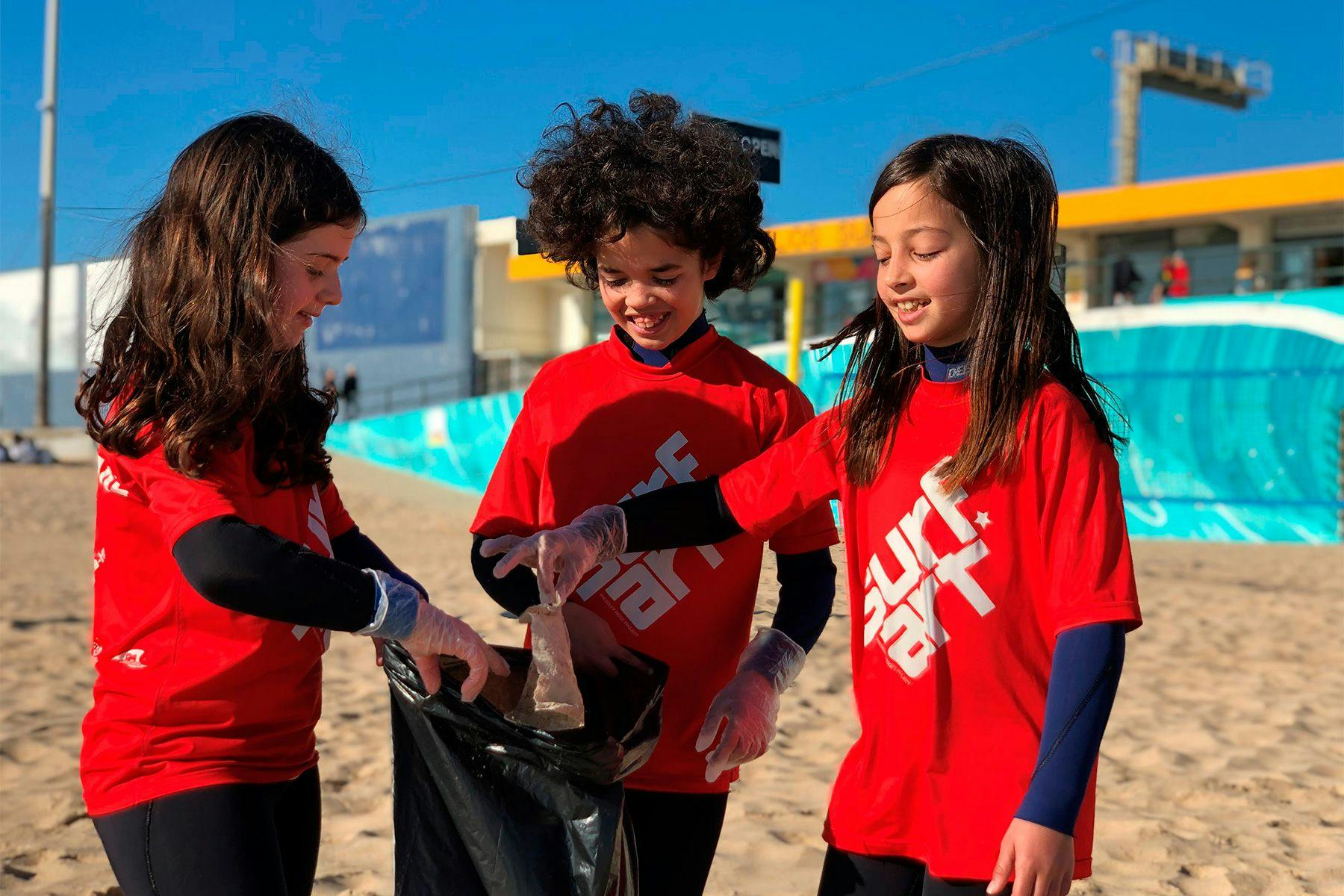
One of the aims of the programme is to tap into the challenges presented by surfing to empower children in their daily lives outside of the water. Can you give us some examples of how you work on building this bridge between the practice of surfing and the participants’ social lives?
Our intervention has sought to develop a set of factors that give youngsters the courage to take risks, even when facing a situation of great adversity (we consider humans as resilient by nature). We believe that even children who have lived and continue to be exposed to traumatic events can shape their lives in an optimistic sense, by developing strengths and skills and having the support of the most significant people in their life. Therefore, we use an intervention methodology based on an ecological approach and sustained in the formation of a therapeutic alliance, where teaching and learning are pillars between the SURF.ART team and the children. We intend to provide a feeling of belonging throughout the project by creating a supportive environment that allows the youth to reach and develop their sense of competence, whilst also providing opportunities to care about each other and be supportive, thus promoting generosity.
We use sport, which for us is not an end in itself, it is not a mere result, but a process, a means and a tool to achieve goals. Surfing was chosen because, in addition to being surfers ourselves, we believe that being considered an adventure sport (risky, difficult to execute) can provide excellent learning opportunities. It allows young people to strive for immediate and sustainable involvement with goals and consequences. When experiencing success and failure, the child realises that in order to have a successful experience, which in itself is therapeutic (for example, being able to catch a wave, pop-up and surf to the end of the wave), you have to plan, put it into action, and at the end reflect on it to understand what went well and what needs to be improved. Alongside the development of the individual, we promote the generalisation of learning, a time when many of the participants become aware of their strengths and weaknesses, and how they can work on these in a structured way. When reaching this stage, the child gains their autonomy and becomes a SURF.ART mentor. In addition to this, some studies that have been done, demonstrate that the simple contact of the human being with water is relaxing and therapeutic.

I found the bi-monthly thematic workshops a very interesting idea, for it spreads the roots of surfing to other related areas of their lives. Can you comment on how these workshops have developed?
The idea of the thematic workshops is to provide a direct participation or co-organisation of workshops with very varied themes (e.g. Health and Healthy Living Habits, Environmental Education and Multimedia Production, among others). With these activities it is intended that children have an active role in the organisation of actions and are able to experience new situations and learning that again reinforce their knowledge and help to reformulate theories, concepts, and behaviours.
As an example, three activities occur to me: one related to the experience of professions (Kidzania), one of painting (developed by the father of a participant) and one of healthy eating (Vitamimos). In the first, the children were able to experience numerous professions, manage their money, “live” the life of an adult for a day. The second was held in order to promote a taste for the arts, where a father held a painting workshop and all the children had the opportunity to paint their own painting with brushes and acrylic paints and oil. The later was promoted by the partner Vitamimos, in an experience that provided knowledge related to healthy eating and its health benefits. The children made their own lunch and snack for that day.

I imagine that the support of others, including parents, plays a big role in the continuous positive evolution of each youth in the programme. What are some observations you have made when conducting the quarterly sessions with parents and the community?
The feeling of belonging is one of the most important needs for human growth, as we all need to feel valued, important and protected by others. The family and the community are the factors that have the greatest influence on the development of self-esteem. Taking into account the context in which these children live and all the associated problems, many are able to rebuild or reinforce their sense of belonging, developing close friendly relationships throughout their lives and establishing relationships with positive people and groups. However, some fail to recover this self-concept and end up revealing one or more relationship problems with others. Thus, in order to identify with someone, they end up integrating into negative groups that promote crime or that defend any distorted ideology. Here begins our work at the community level, which involves breaking these vicious cycles. Our community initiatives provide an opportunity for everyone to feel important and to be accepted within the framework of a social structure. We intend to be working with the community in order to make it less resistant to the efforts of positive people and groups (like ours) for not feeling worthy of inclusion or for fear of being rejected by positive people.
In the sessions with the parents, which ended up being weekly in the confinement period at their request (March to July 2020), we clearly realised that initially they saw the project as an opportunity for their children to practice a sport for free. However, as time went by, attitudes went far beyond sports (e.g., “I could even pay for surf lessons but it wasn’t the same”). The greatest difficulties presented were related to family tasks and routines, time management and responsibilities (hygiene, school tasks, etc.). By working on these needs, promoting parent involvement activities and a parent-child sharing space, we managed to create an environment of belonging, which generated good involvement in these activities and, in turn, allowed the creation of a support network between children and parents. The results reported by the parents include that they started to have a greater capacity to organise themselves as a family, became more responsible and aware of their needs, and enjoyed more family moments. The major areas of change and development listed were negotiation, communication and accountability (helping them to reflect). Finally, correlating these results with those of life projects, we understand that there is undoubtedly a very significant impact when we are able to carry out a systemic intervention, not centred solely on the child.
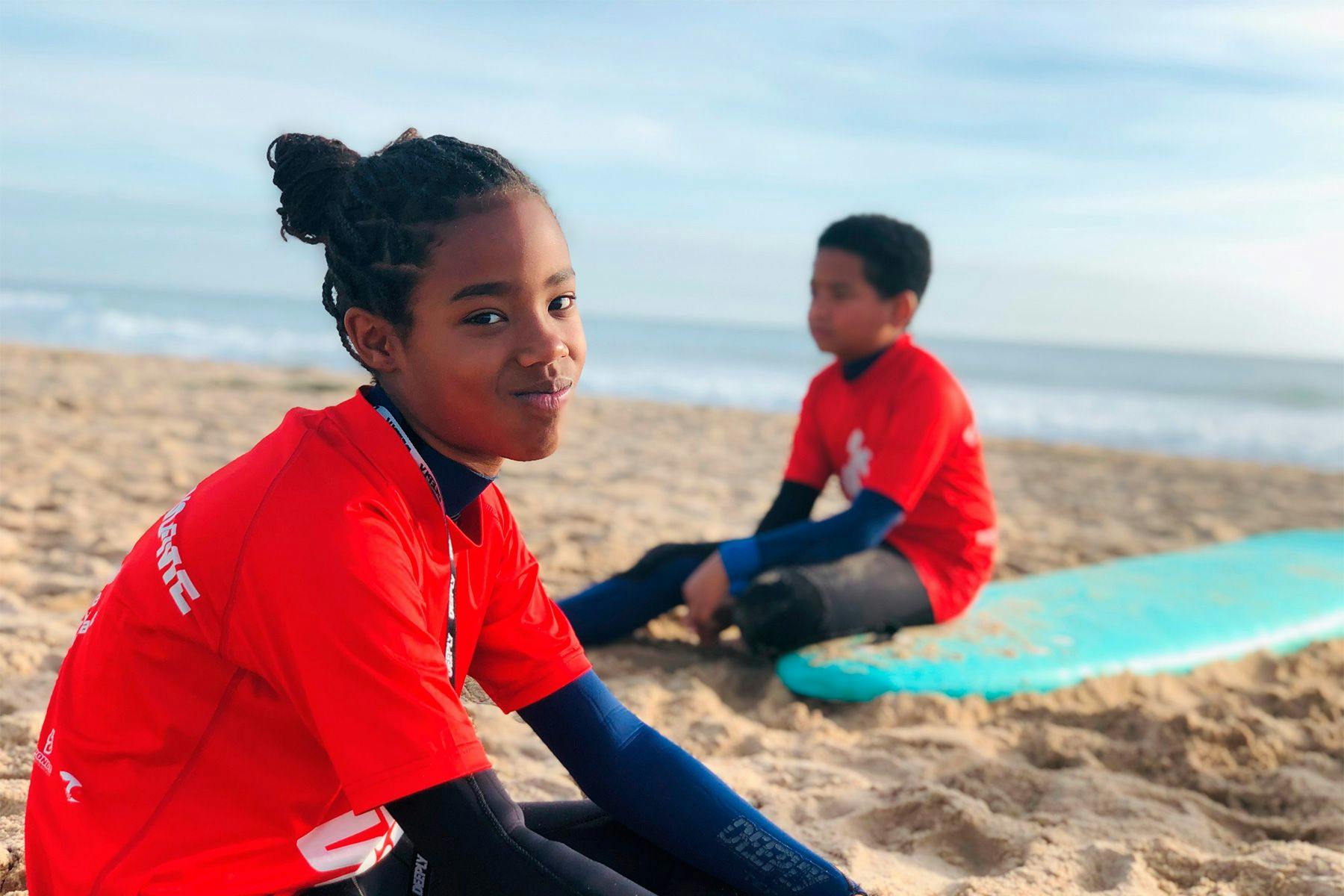
Similarly, what kind of feedback did you get during the end-of-year focus groups with parents and teachers concerning the impact of SURF.ART at home and in school?
The feedback has been very positive. Throughout these 7 years of intervention, we never thought we’d achieve the results that we have come to see and hear from children, teachers and parents. Many of the children report numerous improvements in their self confidence. They show greater capacity to overcome their difficulties – both at school and at a personal level – capacity to think more about their attitudes and consequently the change in their behaviours (critical thinking), improvement in the understanding of the other (empathy), and a physical and psychological well-being. Teachers have reported significant improvements in attention/concentration in class, in communication, in interpersonal relationships, and in the behaviour of some children, revealing higher levels of self-control and respect. As for parents, some have shown enormous appreciation for the project, valuing the intervention and above all the results that their children are obtaining. It is funny that there are parents who, after being present at a session, invite others who have not yet done so, claiming that they will then view these sessions in a different way. Many refer to changes in attitude and behaviour in activities at home, showing more willingness to do them, more respect and a positive way of communicating. In this way we believe that it is possible to make a difference in the lives of these children using surfing as a therapeutic tool.
“(…) Just seeing the joy in the eyes of our little ones when they talk about surfing is beautiful!and it is not by the sea but by the great team that makes the project… I thank you for guiding and helping our children to overcome themselves. Today it might be insignificant, but I am sure that you are helping to build beings capable of making commitments and standing by these commitments. Thank you Surf.ART.”
The author would like to thank Dr Nuno Fazenda for his assistance with the article. For more on SurfART check their Facebook channel or follow them on Instagram.
For those keen to get actively involved, the International Surf Therapy Organisation has a list of related programmes across the globe that use surfing as a means to promote physical and mental health and social change.